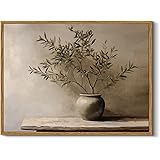Navigating the complexities of interior design can often lead to common pitfalls, particularly within the living room, which typically serves as the central hub for relaxation and social interaction. As comprehensively discussed in the accompanying video, numerous living room design mistakes are frequently observed, ranging from the fundamental arrangement of seating to the nuanced application of color and decor. Understanding these errors is paramount for crafting a space that is both aesthetically pleasing and profoundly functional.
This article aims to expand upon the insights provided, delving deeper into the principles underpinning optimal living room design. Through an examination of professional practices and a consideration of user experience, it is intended that homeowners will be equipped with the knowledge necessary to circumvent these common design failures. Furthermore, strategic interventions will be detailed, ensuring that each element contributes harmoniously to a cohesive and inviting environment.
Addressing Incorrect Seating Placement in Living Room Design
One of the most pervasive living room design mistakes involves the improper placement of seating. The primary function of a living room is to facilitate comfortable conversation and interaction among occupants. Consequently, furniture arrangements should prioritize face-to-face engagement rather than solely orienting towards a television or pushed against walls. Consideration for ergonomic flow and the creation of intimate conversational groupings is therefore essential.
For instance, a sofa and two armchairs might be arranged in a U-shape or an L-shape to foster dialogue, with a coffee table centrally located for accessibility. Moreover, the scale of furniture pieces should be appropriate for the room’s dimensions, preventing either an overcrowded or an underfurnished appearance. When selecting seating, the anticipated number of users and their activity preferences must be thoroughly evaluated to ensure optimal functionality.
Optimal Rug Positioning: Avoiding Common Living Room Design Errors
The placement and size of area rugs frequently contribute to living room design errors. A rug serves as an anchor, delineating the seating area and providing a sense of cohesion within the space. It is generally recommended that the rug be parallel to the longest piece of furniture, typically the sofa or sectional, to create a visually stable foundation.
A prevalent guideline suggests that at least the front two legs of all primary seating pieces should rest upon the rug. This method effectively integrates the furniture into the rug’s defined zone, preventing the appearance of a ‘floating’ arrangement. Furthermore, the rug should extend sufficiently outwards, ideally 6 to 12 inches beyond the furniture, to fully encompass the conversation area without appearing undersized. The visual impact of a correctly sized and positioned rug is transformative, enhancing both comfort and spatial definition.
The Imperative of Comfortable Furniture: A Critical Design Consideration
Disregarding the comfort aspect of furniture constitutes a significant living room design mistake. While aesthetic appeal is important, furniture must primarily provide ergonomic support and ease of use for all individuals, including those with accessibility considerations. Contemporary designs, particularly low-slung sofas, may present challenges for older individuals or those with mobility issues, making ingress and egress difficult.
Therefore, it is advisable to test furniture items in person whenever feasible. When purchasing online, a thorough review of return policies and customer feedback regarding comfort and durability is imperative. Metrics such as seat depth, back height, and cushion density are crucial determinants of long-term comfort and should be carefully considered prior to acquisition. Investing in high-quality, comfortable pieces ensures sustained satisfaction and functionality within the living space.
Achieving Proportionality in Furniture and Decor Scale
Disproportionality in furniture and decor is a frequent living room design error that significantly impairs visual harmony. Pieces that are either too large or too small for the allocated space disrupt scale and balance, creating an unsettling environment. For instance, a diminutive piece of art on an expansive wall appears lost, while an oversized sofa in a compact room overwhelms the area.
To mitigate this, precise measurements of both the room and potential furniture pieces are indispensable. When transitioning between different sized residences, it is often necessary to reassess and potentially replace furniture that no longer aligns with the new spatial context. The principle of scale dictates that furniture should occupy approximately two-thirds of the wall space it abuts, ensuring a balanced visual weight. This careful consideration prevents the common pitfall of mismatched elements and fosters a sense of deliberate design.
Elevating Style: Beyond Matchy-Matchy Throw Pillows
The selection of throw pillows frequently reveals another common living room design mistake: the overuse of uniform, inexpensive, and matchy-matchy options. While a neutral sofa provides a versatile foundation, a lack of thoughtful pillow selection can result in a bland or uninspired aesthetic. Relying on identical sizes, colors, and patterns, often with synthetic fills, fails to introduce visual interest or textural depth.
To achieve a more sophisticated and cohesive look, variations in size, shape, color, and texture are recommended. For example, a combination of square pillows with a lumbar pillow introduces geometric diversity. Furthermore, experimenting with tints, tones, and shades within a chosen color palette can create depth without resorting to overt matching. Luxurious fabrics such as velvet, linen, or knit, combined with feather or down inserts, elevate both comfort and visual appeal, transforming a standard sofa into a curated statement piece.
Rethinking the Television as the Sole Focal Point
An omnipresent living room design mistake involves defaulting to the television as the primary focal point, subsequently dictating the entire room’s layout. While a TV is a functional necessity in many households, designing a space exclusively around it often results in a theater-style arrangement that neglects conversational seating and other potential aesthetic anchors. Such an approach can render the room static and visually uninteresting.
Consideration should be given to alternative or supplementary focal points, such as an architectural fireplace, a captivating piece of large-scale art, or an expansive window offering a picturesque view. When the television must be a significant feature, solutions like frame TVs or integrated media cabinetry can mitigate its dominance. The aim is to create a multi-faceted space where the TV coexists with other elements of interest, thus fostering a more dynamic and engaging environment.
Leveraging Natural Light and Views in Living Room Design
Overlooking or, worse, obstructing natural light and existing views represents a significant living room design mistake. A well-lit room, permeated by natural light, inherently feels more spacious, inviting, and invigorating. Heavy draperies, opaque window treatments, or poorly placed furniture can significantly impede the influx of sunlight, transforming a potentially bright space into a dim, cave-like area.
Consequently, window treatments should be selected to maximize light while offering necessary privacy and light control. Sheer curtains or drapes that stack back fully, for instance, are often preferred. Moreover, if a room affords a compelling external view, seating arrangements should be configured to allow occupants to appreciate it. While maintaining the primary focus on conversation, a strategic placement of a chair or sofa can offer an occasional connection to the outdoors, enhancing the room’s overall appeal and supporting biophilic design principles.
Strategic Color Choices: Beyond Monochromatic White Walls
An exclusive reliance on white paint for living room walls often constitutes a living room design mistake, limiting the potential for character and warmth. While white is a versatile neutral, it can sometimes render a space sterile or uninspired if not chosen with careful consideration for its undertones and the room’s specific lighting conditions. Introducing mid-tones or deeper hues can significantly enhance a room’s custom feel and overall comfort.
When selecting paint colors, the Light Reflectance Value (LRV) is a critical metric. LRV quantifies the percentage of visible and usable light that a color reflects. For instance, high LRV whites, such as Benjamin Moore’s Chantilly Lace or Super White, can create an overly bright, almost clinical ambiance in rooms with abundant natural light. Conversely, selecting whites with lower LRVs or incorporating muted mid-tones like a soft sage green, a warm beige, or a deep navy can introduce depth and sophistication, making the space feel more curated and less like a utilitarian environment. This nuanced approach to color selection allows for a more personalized and engaging living space.
Thoughtful Art Placement: Avoiding Visual Overload
The incorrect display or excessive quantity of art pieces is another common living room design mistake, often leading to visual clutter rather than curated expression. While art is a powerful means of personalizing a space, an overly dense gallery wall or inappropriately scaled pieces can overwhelm the viewer and detract from individual artworks.
Strategic art placement dictates that sufficient negative space, or “white space,” should surround and separate individual pieces, particularly within a gallery wall arrangement. This allows each artwork to breathe and be appreciated without competing for attention. Furthermore, art should be hung at an appropriate height, generally eye-level for a standing adult, with the center of the artwork or gallery grouping around 57-60 inches from the floor. Proportionally, a single large piece of art or a well-composed gallery wall should typically occupy about two-thirds of the wall space above a piece of furniture, ensuring balance and visual hierarchy without creating a “Hogwarts look” where every inch of wall is covered.
Balancing Aesthetics and Functionality: The Open Shelving Dilemma
An overabundance of open shelving, including floating shelves, open media consoles, and open bookcases, frequently contributes to living room design mistakes by fostering visual clutter. While open shelving can be excellent for showcasing a carefully curated collection of aesthetically pleasing objects, it is ill-suited for the display of everyday functional items such as remote controls, charging cables, or less attractive media. The continuous visual stimulation from too many exposed items can make a space feel disorganised and overwhelming.
The strategic integration of closed cabinetry or furniture with concealed storage is therefore crucial. This allows for the discreet storage of utilitarian objects, maintaining a clean and uncluttered visual landscape. A thoughtful balance between open and closed storage units ensures that essential items remain accessible without contributing to visual chaos. This approach promotes a more serene and intentional living room environment, highlighting cherished possessions while effectively managing functional necessities.











